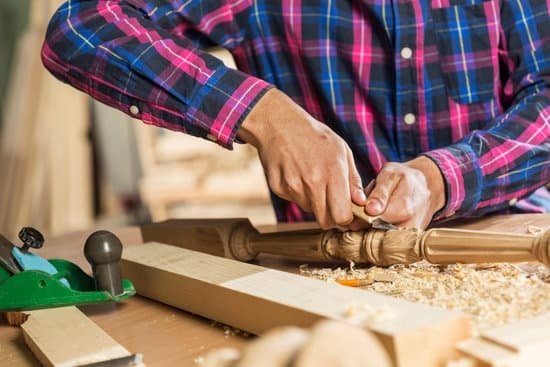Woodworking is a cherished craft that requires the use of high-quality materials to create beautiful and durable pieces. One often overlooked but highly prized material in woodworking is Buxus, a type of evergreen shrub commonly known as boxwood.
However, not all Buxus species are suitable for woodworking due to their size limitations. In this blog post, we will explore the Buxus species that grow large enough for woodworking purposes, providing valuable information for individuals seeking top-notch materials for their projects.
The demand for woodworking materials from Buxus species is on the rise as artisans and craftsmen recognize the unique properties and versatility of boxwood. Its fine grain, smooth texture, and rich color make it ideal for intricate carvings, turned objects, and veneers.
However, finding the right Buxus species that can yield sizable pieces suitable for larger woodworking projects can be a challenge. This article aims to address this issue by presenting an in-depth analysis of various Buxus species and their suitability for woodworking applications.
Understanding the characteristics of Buxus is crucial when selecting the appropriate species for woodworking projects. The next section will provide a detailed overview of different Buxus species, shedding light on their growth patterns, wood quality, and common uses. By familiarizing ourselves with these characteristics, we can make well-informed decisions when choosing the right Buxus species that meets both our size requirements and desired aesthetic qualities in our woodworking endeavors.
Understanding Buxus
Buxus, commonly known as boxwood, is a genus of evergreen shrubs and small trees that belong to the family Buxaceae. These plants are well-known for their dense, compact growth and ornamental value in gardens and landscapes. However, they also possess qualities that make them suitable for woodworking.
One of the key characteristics of Buxus species is their slow growth rate, which contributes to the development of dense wood with fine grain patterns. This makes it highly desirable for woodworking projects that require precision and intricate details. The wood from Buxus species tends to be hard and durable, making it ideal for carving, turning, and other woodworking techniques.
Buxus has a long history of use in various woodworking applications. Its versatility is evident in its common uses across different industries. For example, the wood from Buxus can be crafted into musical instruments like flutes and recorder bodies due to its excellent tonal qualities. It is also favored in the creation of small wooden boxes, intricate furniture accents, decorative mouldings, and even tool handles.
In addition to its desirable properties as a woodworking material, Buxus also offers aesthetic benefits. The foliage of these plants features small leaves that are evergreen, providing year-round visual interest in garden landscapes. As such, using Buxus wood allows craftsmen to incorporate a sense of natural beauty into their creations while capitalizing on the material’s favorable working properties.
Overall, understanding the characteristics and common uses of Buxus is crucial for anyone interested in woodworking with this versatile material. By selecting the right species and implementing proper techniques when working with Buxus wood, craftsmen can bring out its unique qualities and create stunning pieces that stand the test of time.
Buxus Species for Woodworking
Buxus is a genus of plants that includes several species with wood that is suitable for woodworking. These species are sought after by woodworkers due to their durability, fine grain, and beautiful color. In this section, we will explore some of the Buxus species that are known to grow large enough for woodworking purposes.
One of the most well-known Buxus species for woodworking is Buxus sempervirens. This species is commonly found in Europe and has been utilized in woodworking projects for centuries. It can grow up to 20 feet tall and has dense wood that is perfect for carving intricate designs or making small furniture pieces.
The wood of Buxus sempervirens is fine-grained, allowing for smooth finishes, and it has a pale yellowish color that darkens over time. Its durability makes it well-suited for outdoor applications such as garden furniture or decorative elements.
Another Buxus species worth considering in woodworking projects is Buxus microphylla. While it may not grow as tall as other species, reaching about 6 feet in height, it compensates with its unique wood properties.
The wood of Buxus microphylla has a reddish-brown color and features small pores, which gives it a distinct appearance when finished. It is often used in smaller woodworking items such as jewelry boxes or musical instruments due to its fine texture and ability to hold intricate details.
| Buxus Species | Maximum Height | Wood Properties | Common Uses |
|---|---|---|---|
| Buxus sempervirens | Up to 20 feet | Pale yellowish, fine-grained | Carvings, small furniture, outdoor applications |
| Buxus microphylla | About 6 feet | Reddish-brown, fine texture with small pores | Jewelry boxes, musical instruments, smaller woodworking items |
These are just two examples of Buxus species that can be utilized in woodworking projects. Other Buxus species such as Buxus balearica and Buxus sinica also deserve consideration for their size and unique wood characteristics. In the following sections, we will explore these species in more detail and discuss their potential uses in the woodworking industry.
Buxus sempervirens
Buxus sempervirens, commonly known as common boxwood or European boxwood, is one of the most popular Buxus species used in woodworking projects. This evergreen shrub is highly valued for its growth size and the quality of its wood, making it a preferred choice for craftsmen and artisans.
One of the key attributes of Buxus sempervirens that makes it suitable for woodworking is its ability to grow to a substantial size. A mature specimen can reach up to 20 feet in height, allowing for the production of larger-scale wooden pieces such as furniture, cabinetry, and decorative items. The sturdy trunk and branches contribute to the strength and durability of the wood, ensuring longevity in finished products.
In terms of wood quality, Buxus sempervirens possesses several desirable characteristics. The heartwood of this species is typically creamy yellow or light brown in color, with a fine and uniform texture. It has a straight grain pattern that makes it easy to work with hand tools or machinery. The wood also exhibits good stability, low shrinkage, and resistance to insect damage and decay.
Woodworkers often appreciate the close-grained nature of Buxus sempervirens, which allows for intricate carving and detailed craftsmanship. Its density and hardness make it ideal for turning projects like spindles or intricate decorative objects. Additionally, the high natural oils content in Buxus wood contributes to its resistance against moisture penetration, making it suitable for both indoor and outdoor applications.
To ensure successful woodworking projects using Buxus sempervirens, it is important to properly prepare the wood before use. This involves seasoning or drying the lumber adequately to minimize any potential warping or cracking during fabrication. Additionally, employing sharp cutting tools coupled with proper cutting techniques will yield clean cuts without tear-out or splintering.
Overall, Buxus sempervirens stands out as an excellent choice for woodworking projects due to its growth size and wood quality. Its availability, versatility, and durability make it a popular preference among woodworkers looking to create high-quality furniture and decorative items.
Buxus microphylla
Growth Size of Buxus microphylla
Buxus microphylla, commonly known as littleleaf boxwood or Japanese boxwood, is a popular species that holds great potential for woodworking purposes. When considering its growth size, Buxus microphylla typically reaches a height of 2 to 3 feet and has a spread of around 4 to 6 feet. While it may not grow as large as some other Buxus species, its compact size can still make it suitable for various woodworking projects.
Unique Properties of Buxus microphylla Wood
One of the notable features of Buxus microphylla wood is its fine grain, which gives it a smooth and attractive appearance. The wood is also fairly dense and hard, making it durable and resistant to wear and tear. These properties make Buxus microphylla wood suitable for intricate carving and shaping, allowing woodworkers to create detailed designs with precision.
Another advantage of Buxus microphylla wood is its excellent dimensional stability. It has minimal warping or shrinking tendencies, ensuring that woodworking projects made from this species will maintain their shape over time. Additionally, the wood has good working properties, making it relatively easy to cut, shape, and sand.
Potential Uses in Woodworking
Due to its compact growth size and unique properties, Buxus microphylla finds applications in various woodworking projects. Its finely grained wood makes it ideal for crafting small decorative items such as jewelry boxes, picture frames, and intricate carvings. It can also be used for turning projects like pen barrels or small bowls.
Woodworkers who prefer working with smaller objects will particularly appreciate the versatility of Buxus microphylla in their craft. The rich coloration of the wood can add an aesthetic appeal to any project, and its durability ensures that the finished pieces will withstand regular use.
In the next section, we will explore another Buxus species, Buxus balearica, which stands out for its larger growth size compared to other Buxus species.
Buxus balearica
Buxus balearica is a species of Buxus that stands out for its larger size compared to other Buxus species. This makes it a desirable choice for woodworking projects that require bigger dimensions of wood. Buxus balearica, commonly known as Balearic boxwood, is native to the Mediterranean region and can be found in countries such as Spain, Italy, and Greece.
One of the main advantages of Buxus balearica for woodworking is its growth potential. This species has the capacity to reach heights of up to 15 feet (4.5 meters) and can develop a trunk diameter of around 4 inches (10 centimeters). This makes it suitable for larger-scale woodworking projects such as furniture making or architectural details.
In terms of its wood properties, Buxus balearica offers notable qualities for woodworking purposes. Its wood is dense and fine-grained, which allows for precise carving and shaping. It has a pale yellow color with streaks of brown, giving it an attractive appearance when finished with natural oils or varnish.
Woodworkers who choose to work with Buxus balearica should keep in mind that this species requires careful handling due to its toxicity. The leaves and bark contain alkaloids that can cause skin irritation or allergic reactions in some individuals. Therefore, proper protective gear such as gloves and eye goggles should be worn when working with this wood.
Overall, Buxus balearica presents an excellent option for woodworking projects that require larger dimensions. Its growth potential combined with the appealing characteristics of its wood make it a valuable resource for furniture makers, artisans, and hobbyists alike seeking quality materials for their creations.
Buxus sinica
Buxus sinica, also known as Chinese boxwood, is a species of Buxus that has gained recognition in the woodworking industry for its viability as a material. In this section, we will discuss the growth size of Buxus sinica and the distinctive features of its wood that make it a desirable option for woodworking projects.
Growth Size
Buxus sinica is known for its relatively large size compared to other Buxus species. It can reach heights of up to 20 feet and has a spread of approximately 10 feet. This makes it suitable for larger woodworking projects that require sizable sections of wood. The growth rate of Buxus sinica is moderate, allowing it to establish well with proper care and maintenance.
Distinctive Wood Features
The wood produced by Buxus sinica is highly valued in the woodworking industry due to its unique characteristics. It has a pale yellow to light brown color with subtle grain patterns, making it aesthetically pleasing for various woodworking applications. The wood is fine-grained and dense, providing excellent stability and durability when used in projects such as furniture making, cabinetry, and turning.
One notable feature of Buxus sinica wood is its natural resistance to decay and insect infestation. This makes it an ideal choice for outdoor furniture or structures that are exposed to moisture or pests. Additionally, the wood polishes well and can be finished to a smooth surface, enhancing its visual appeal.
Overall, Buxus sinica offers woodworkers a reliable option for their projects due to its substantial growth size and favorable characteristics. Its availability in larger sizes allows craftsmen to work with more versatile dimensions while maintaining the quality and durability required for long-lasting pieces.
In the next section, we will introduce additional Buxus species that also have potential in the woodworking industry, expanding the range of options available to woodworkers seeking suitable materials for their projects.
Other Buxus Species to Consider
One of the advantages of working with Buxus species for woodworking is the variety of options available. In addition to the popular Buxus sempervirens, there are several other Buxus species that have the potential to grow large enough for woodworking purposes. These species offer unique characteristics and can be utilized in different ways, providing woodworkers with a diverse range of choices.
Buxus microphylla is one such species that deserves attention in the woodworking industry. While it may not grow as large as some other species, its compact size makes it suitable for smaller woodworking projects. The wood of Buxus microphylla is known for being fine-grained, making it ideal for intricate carvings and detailed work. Its pale yellow color offers a beautiful contrast when paired with dark finishes, adding an elegant touch to any woodworking project.
Another promising Buxus species for woodworking is Buxus balearica. Unlike some other Buxus varieties, Buxus balearica has the potential to reach a larger size, making it suitable for larger-scale woodworking projects such as furniture making or cabinetry. The wood of this species is generally lighter in color compared to other Buxus woods but still possesses similar durability and workability. This makes Buxus balearica a versatile choice for both indoor and outdoor applications.
Lastly, Buxus sinica is worth considering in the realm of woodworking materials. While it may not be as widely known or readily available as other Buxus species, it has its own unique qualities that make it an interesting option for woodworkers.
The wood of Buxus sinica tends to have a darker coloration and richer grain pattern compared to some other species, giving it a distinct look when finished. Additionally, this particular species has good strength properties, making it suitable for structural elements in larger woodworking projects.
Tips for Woodworking with Buxus
Woodworking with Buxus wood can be a fulfilling and rewarding experience, but it requires some specific techniques and considerations to achieve the best results. Whether you are a beginner or an experienced woodworker, there are several tips that can help you work with Buxus effectively.
When it comes to cutting Buxus wood, it is important to use sharp tools to ensure clean and precise cuts. This will not only make the woodworking process easier but also enhance the final appearance of your project. Buxus is a dense and hard wood, so using tools such as handsaws or chisels with fine teeth will yield better results. Additionally, taking your time and making slow, deliberate cuts will minimize splintering or tear-out.
Design considerations are also crucial when working with Buxus wood. Due to its small size and slow growth rate, it often takes a significant amount of time for Buxus trees to reach suitable sizes for woodworking. As a result, it is important to carefully plan your projects and consider the availability of appropriate stock sizes. You may need to join smaller pieces together or create intricate designs that maximize the usage of the available material.
Finishing recommendations for Buxus wood can greatly enhance its natural beauty and provide protection against wear and tear. Prior to finishing, sanding the surface smooth is essential for achieving a polished look. It is advised to start with coarser grit sandpaper and progress towards finer grits for best results.
When choosing a finish for Buxus, oils or varnishes are commonly used options that bring out the grain patterns while providing durability. However, it’s essential to test finishes on scrap pieces before applying them to your final project to ensure that you achieve the desired look.
By following these practical tips for working with Buxus wood, you can create beautiful woodworking projects that showcase the unique characteristics of this species. Remember to exercise patience, attention to detail, and proper finishing techniques to achieve the best results. With its density, durability, and aesthetic appeal, Buxus wood is a valuable material for any woodworking enthusiast or professional.
Conclusion
In conclusion, this blog post has provided a comprehensive overview of various Buxus species that can grow large enough for woodworking purposes. We have explored the characteristics and potential uses of Buxus sempervirens, Buxus microphylla, Buxus balearica, and Buxus sinica, highlighting their growth potential and unique properties of their wood. Additionally, we have introduced other Buxus species that deserve consideration in the woodworking industry.
It is clear that careful selection of the right Buxus species is crucial in meeting the demand for quality woodworking materials. Woodworkers should consider factors such as growth size, wood quality, and unique features when choosing the ideal Buxus species for their projects. This will ensure that they are able to achieve the desired results and create high-quality woodwork.
Furthermore, it is important to note that working with Buxus wood requires specific techniques and considerations. As discussed in the previous section, proper cutting techniques, design considerations, and finishing recommendations should be followed to maximize the potential of Buxus wood in woodworking projects.
Frequently Asked Questions
Which boxwoods grow the largest?
Boxwoods (Buxus) come in different varieties and sizes, but the specific type that grows the largest is typically the American boxwood (Buxus sempervirens). This variety can reach a height of up to 20 feet and possesses a dense, rounded shape. It is known for its ability to provide substantial coverage when used as hedges or topiaries.
Which boxwood is best for a tall hedge?
When considering a tall hedge, the English boxwood (Buxus sempervirens ‘Suffruticosa’) is often considered the best choice. While it may not grow as tall as some other varieties, it has a slow growth rate and compact nature that makes it ideal for formal hedges.
The English boxwood can be pruned into desired shapes easily, making it perfect for maintaining a consistent hedge height without becoming overgrown.
What is the difference between boxwood and Buxus?
The terms “boxwood” and “Buxus” essentially refer to the same thing: a genus of plants within the family Buxaceae that includes around 90 different species of shrubs commonly known as boxwoods. When people mention boxwood or Buxus interchangeably, they are referring to the same group of plants. These shrubs are characterized by their small leaves, dense growth, and ability to withstand pruning well.
Some popular species within this genus include Buxus sempervirens (American boxwood), Buxus microphylla (littleleaf boxwood), and Buxus sinica var. insularis (Korean boxwood).

Hi everyone! I’m a woodworker and blogger, and this is my woodworking blog. In my blog, I share tips and tricks for woodworkers of all skill levels, as well as project ideas that you can try yourself.





